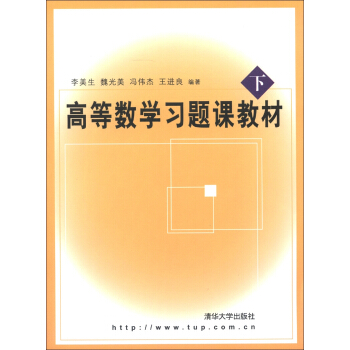![相空间中的调和分析 [Harmonic Analysis in Phase Space]](https://pic.windowsfront.com/10184604/449ad0e8-c2f2-4c1f-b058-46d10c87e891.jpg)

具体描述
编辑推荐
The main point of Chapter 2 is the development of the Weyl calculusof pseudodifferential operators.内容简介
The phrase "harmonic analysis in phase space" is a concise if somewhatinadequate name for the area of analysis on Rn that involves the Heisenberggroup,quantization,the Weyl operational calculus,the metaplectic representa-tion,wave packets,and related concepts: it is meant to suggest analysis on theconfiguration space Rn done by working in the phase space Rn x Rn. The ideasthat fall under this rubric have originated in several different fidds——Fourieranalysis,partial differential equations,mathematical physics,representationtheory,and number theory,among others.内页插图
目录
PrefacePrologue. Some Matters of Notation
CHAPTER 1.
THE HEISENBERG GROUP AND ITS REPRESENTATIONS
1. Background from physics
Hamiltonian mechanics, 10. Quantum mechanics, 12. Quantization, 15.
2. The Heisenberg group
The automorphisms of the Heisenberg group, 19.
3. The SchrSdinger representation
The integrated representation, 23. Twisted convolution, 25.
The uncertainty principle, 27.
4. The Fourier-Wigner transform
Radar ambiguity functions, 33.
5. The Stone-von Neumann theorem
The group Fourier transform, 37.
6. The Fock-Bargmann representation
Some motivation and history, 47.
7. Hermite functions
8. The Wigner transform
9. The Laguerre connection
10. The nilmanifold representation
11. Postscripts
CHAPTER 2.
QUANTIZATION AND PSEUDODIFFERENTIAL OPERATORS
1. The Weyl correspondence
Covariance properties, 83. Symbol classes, 86. Miscellaneous remarks
and examples, 90.
2. The Kohn-Nirenberg correspondence
3. The product formula
4. Basic pseudodifferential theory
Wave front sets, 118.
5. The CalderSn-Vaillancourt theorems
6. The sharp Garding inequality
7. The Wick and anti-Wick correspondences
CHAPTER 3.
WAVE PACKETS AND WAVE FRONTS
1. Wave packet expansions
2. A characterization of wave front sets
3. Analyticity and the FBI transform
4. Gabor expansions
CHAPPTER 4.
THE METAPLECTIC REPRESENTATION
1. Symplectic linear algebra
2. Construction of the metaplectic representation
The Fock model, 180.
3. The infinitesimal representation
4. Other aspects of the metaplectic representation
Integral formulas, 191. Irreducible subspaces, 194. Dependence on
Plancks constant, 195. The extended metaplectic representation, 196.
The Groenewold-van Hove theorems, 197. Some applications, 199.
5. Gaussians and the symmetric space
Characterizations of Gaussians, 206.
6. The disc model
7. Variants and analogues
Restrictions of the metaplectic representation, 216. U(n,n) as a complex
symplectic group, 217. The spin representation, 220.
CHAPTER 5.
THE OSCILLATOR SEMIGROUP
1. The SchrSdinger model
The extended oscillator semigroup, 234.
2. The Hermite semigroup
3. Normalization and the Cayley transform
4. The Fock model
Appendix A. Gaussian Integrals and a Lemma on Determinants
Appendix B. Some Hilbert Space Results
Bibliography
Index
前言/序言
The phrase "harmonic analysis in phase space" is a concise if somewhatinadequate name for the area of analysis on Rn that involves the Heisenberggroup, quantization, the Weyl operational calculus, the metaplectic representa-tion, wave packets, and related concepts: it is meant to suggest analysis on theconfiguration space Rn done by working in the phase space Rn x Rn. The ideasthat fall under this rubric have originated in several different fidds——Fourieranalysis, partial differential equations, mathematical physics, representationtheory, and number theory, among others. As a result, although these ideas areindividually well known to workers in such fields, their close kinship and thecross-fertilization they can provide have often been insufficiently appreciated.One of the principal objectives of this monograph is to give a coherent accountof this material, comprising not just an efficient tour of the major avenues butalso an exploration of some picturesque byways.Here is a brief guide to the main features of the book. Readers shouldbegin by perusing the Prologue and perhaps refreshing their knowledge aboutGaussian integrals by glancing at Appendix A.
Chapter I is devoted to the description of the representations of the Heisen-berg group and various integral transforms and special functions associated tothem, with motivation from physics. The material in the first eight sectionsis the foundation for all that follows, although readers who wish to proceedquickly to pseudodifferential operators can skip Sections 1.5-1.7.
The main point of Chapter 2 is the development of the Weyl calculusof pseudodifferential operators. As a tool for studying differential equations,the Weyl calculus is essentially equivalent to the standard Kohn-Nirenbergcalculus——in fact, this equivalence is the principal result of Section 2.2——but itis somewhat more elegant and more natural from the point of view of harmonicanalysis. Its close connection with the Heisenberg group yields some insightswhich are useful in the proofs of the Calder6n-Vaillancourt (0,0) estimate andthe sharp Grding inequality in Sections 2.5 and 2.6 and in the argumentsof Section 3.1. Since my aim is to provide a reasonably accessible introduc-tion rather than to develop a general theory (in contrast to H6rmander [70]),I mainly restrict attention to the standard symbol classes S.
用户评价
初次接触《相空间中的调和分析》这本书,我并没有抱着太高的期望,只是觉得这个题目听起来颇具学术价值。然而,随着阅读的深入,我逐渐发现自己被卷入了一个前所未有的数学探索旅程。作者以一种近乎诗意的语言,描绘了相空间与调和分析之间错综复杂的关系。每一个章节都像是一幅精心绘制的画卷,展现了数学工具如何在描述物理现象时展现出惊人的洞察力。我特别注意到作者对于某些关键定理的推导过程,其严谨性和逻辑性令人拍案叫绝。他并没有简单地罗列公式,而是深入剖析了每一个推导步骤背后的直观意义,让我在理解抽象概念的同时,也能领略到数学的内在逻辑之美。我曾尝试将书中的某些结论与我在其他领域所学到的知识进行比对,发现很多看似不相关的数学工具,在相空间调和分析的框架下,竟然能够被统一地理解和解释,这无疑是我在这本书中最大的惊喜。
评分这本书给我带来的最深刻的感受,是一种对数学世界的全新认知。在阅读《相空间中的调和分析》之前,我可能还停留在对传统数学分支的理解上。但这本书,就像一把钥匙,为我打开了一扇通往更广阔数学领域的大门。作者以一种非常具有启发性的方式,将相空间的几何直觉与调和分析的代数工具巧妙地结合起来。我被书中对某些核心概念的深入剖析所折服,例如,作者是如何一步步构建出理解相空间中函数性质的框架。每一章的过渡都显得非常自然,仿佛是在引导读者进行一次精心的探险。我曾将书中讨论的某些方法与我之前在其他领域所遇到的问题进行对比,发现了很多意想不到的联系,这让我更加深刻地体会到数学的普适性和统一性。这本书的价值,不仅仅在于它传授了多少具体的知识点,更在于它重塑了我对数学的理解方式。
评分在我看来,《相空间中的调和分析》这本书提供了一种全新的视角来理解数学。它不仅仅是关于公式和定理的堆砌,更是关于如何用数学的语言去描绘和理解世界的内在规律。作者在书中对于相空间和调和分析的结合,展现出了一种令人着迷的数学美学。我尤其欣赏作者在解释一些抽象概念时所采用的类比和例子,它们使得原本枯燥的数学理论变得生动形象。例如,当他描述某个函数在相空间中的演变时,我仿佛能看到一个动态的画面在眼前展开。这本书的深度远超我的预期,它要求读者不仅要有扎实的数学基础,更要有一定的抽象思维能力。然而,正是这种挑战,让我感到兴奋,因为每一次克服困难,我都感觉自己又向前迈进了一大步。
评分这本书的封面设计相当朴实,但正是这种低调的设计,让我对它所蕴含的深刻内容充满期待。当我翻开第一页,就立刻被它清晰的逻辑和严谨的推理所吸引。作者并非直接抛出复杂难懂的公式,而是循序渐进地引导读者进入相空间的奇妙世界。从基础概念的梳理,到傅里叶分析在其中的应用,每一步都设计得恰到好处,仿佛是在为一项宏大的数学工程打下坚实的地基。我尤其欣赏作者在解释某些抽象概念时所使用的类比和图示,它们极大地降低了理解门槛,让我在面对看似高深的理论时,也能感到一丝掌控感。阅读过程中,我常常需要停下来,仔细回顾前面学到的知识,并尝试将其与我已有的数学背景相结合,这种互动式的学习过程,让我受益匪浅。这本书不仅仅是一本教科书,更像是一位循循善诱的导师,引导我一步步揭开相空间分析的神秘面纱,去感受数学之美。
评分这本书的结构设计堪称精妙。它并非按照传统的线性思维来组织内容,而是巧妙地将不同的概念和理论编织在一起,形成一个相互关联的知识网络。我惊叹于作者能够如此清晰地阐述相空间与调和分析这两个看似独立却又紧密相连的数学分支。从一开始的铺垫,到逐渐深入到各种高级分析技巧的应用,整个过程都充满了惊喜。我最喜欢的部分是作者在介绍某些特殊函数及其在相空间中的行为时,所进行的细致入微的分析。这些分析不仅展示了数学工具的强大能力,更让我体会到了数学语言的简洁与优雅。在阅读过程中,我发现自己会反复咀嚼某些段落,因为作者总是能在不经意间点醒我之前从未意识到的深刻联系。这本书不仅教会了我知识,更重要的是,它培养了我一种全新的、更加宏观的数学视角。
相关图书
本站所有内容均为互联网搜索引擎提供的公开搜索信息,本站不存储任何数据与内容,任何内容与数据均与本站无关,如有需要请联系相关搜索引擎包括但不限于百度,google,bing,sogou 等,本站所有链接都为正版商品购买链接。
© 2025 windowsfront.com All Rights Reserved. 静流书站 版权所有




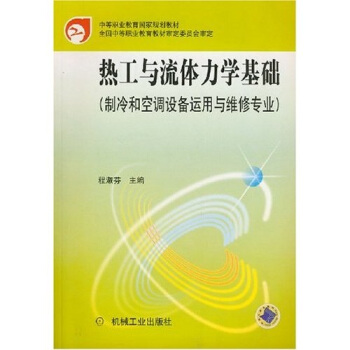


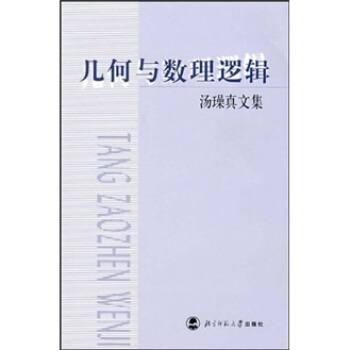

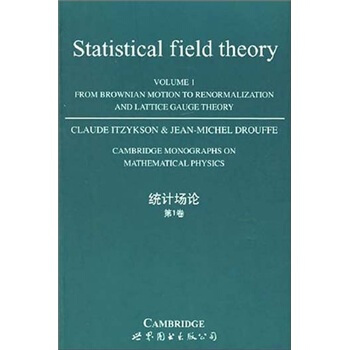







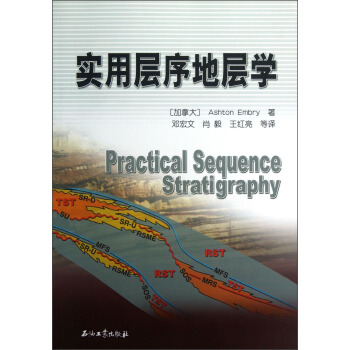
![大学物理简明双语教程 [ Concise Bilingual Course of University Physics] pdf epub mobi 电子书 下载](https://pic.windowsfront.com/11202169/rBEQWFFUHDYIAAAAAADGxgdq3H8AADDWQEejegAAMbe271.jpg)
